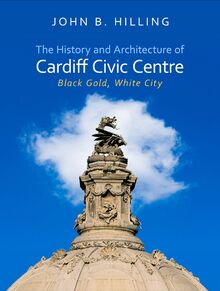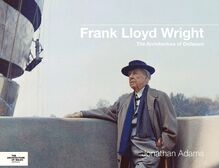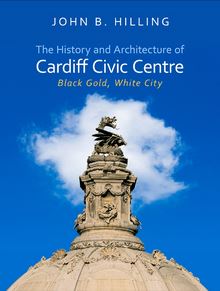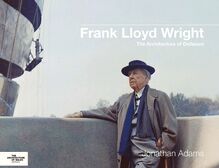The Architecture of Wales , livre ebook
295
pages
English
Ebooks
2018
Vous pourrez modifier la taille du texte de cet ouvrage
Obtenez un accès à la bibliothèque pour le consulter en ligne En savoir plus
Découvre YouScribe en t'inscrivant gratuitement
Découvre YouScribe en t'inscrivant gratuitement
295
pages
English
Ebooks
2018
Vous pourrez modifier la taille du texte de cet ouvrage
Obtenez un accès à la bibliothèque pour le consulter en ligne En savoir plus
Publié par
Date de parution
15 août 2018
Nombre de lectures
7
EAN13
9781786832863
Langue
English
Poids de l'ouvrage
34 Mo
Architecture reflects not only a nation’s history, but also how its people lived, worked, prayed and fought over the centuries. Since the publication of John B. Hilling’s The Historic Architecture of Wales in 1976, there has been no other attempt at addressing the architecture of Wales as a whole, and this revised publication meets a long-felt need for a general survey of architecture in Wales. It covers two thousand years of architectural history, reflecting the nation’s life from Roman times to the present century – less a revision of the original than a complete re-writing, taking into account recent research and recent buildings. The book is illustrated with 268 colour and black-and-white photographs, drawings, plans and maps.
General Editor’s Preface
‘Letting the Light In’ Gillian Clarke
List of Illustrations and
Acknowledgements
Author’s Preface and Acknowledgements
Land, History and Architecture Roman Occupation and Celtic Survival
Early Castles of the Middle Ages
Later Castles of the Middle Ages
Romanesque Churches of the Middle Ages
Gothic Churches of the Middle Ages
Other Secular Buildings and Towns of the Middle Ages
Tudor and Renaissance Architecture
Vernacular Houses
Neoclassicism, Gothick and the Picturesque
Non-domestic Architecture in the Eighteenth Century
Industry and Transport, 1800–1815
Country Houses and Planned Towns, 1800–1915
Religion and Education, 1800–1915
Civic and Communal, 1800–1915
Arts and Crafts to Early Modernism, 1900–1939
Late Modernism, 1940–1985
Recent Developments, 1986–2017, Simon Unwin
Appendix 1: Glossary of Welsh Architectural and Building Terms
Appendix 2: List of Award-winning Architects
Select Bibliography
Index of Architects, Engineers and Designers
General Index
Publié par
Date de parution
15 août 2018
Nombre de lectures
7
EAN13
9781786832863
Langue
English
Poids de l'ouvrage
34 Mo
General Editor
- Mary Wrenn
Royal Society of Architects in Wales - Cymdeithas Frenhinol Penseiri yng Nghymru
Series Editors
- Bella Kerr
- David Thomas
- Jonathan Vining
Advisory Panel
- Irena Bauman, Director, Bauman Lyons Architects, Leeds
- Richard Parnaby, formerly Professor of Architecture, UWE Bristol and University of Wales Trinity Saint David
- Alan Powers, author and architectural historian
- Ian Pritchard, Secretary General, Architects Council of Europe (ACE)
- Damian Walford Davies, Head of School, Cardiff School of English, Communication and Philosophy, Cardiff University
Published in cooperation with
The Royal Society of Architects in Wales - Cymdeithas Frenhinol Penseiri yng Nghymru
The Architecture of Wales
from the first to the twenty-first century
John B. Hilling
with a contribution from Simon Unwin -->
© John B. Hilling, 2018
All rights reserved. No part of this book may be reproduced in any material form (including photocopying or storing it in any medium by electronic means and whether or not transiently or incidentally to some other use of this publication) without the written permission of the copyright owner. Applications for the copyright owner s written permission to reproduce any part of this publication should be addressed to the University of Wales Press, 10 Columbus Walk, Brigantine Place, Cardiff CF10 4UP.
www.uwp.co.uk
British Library CIP Data
A catalogue record for this book is available from the British Library
ISBN 978-1-78683-284-9
eISBN 978-1-78683-286-3
The right of John B. Hilling to be identified as author of this work has been asserted in accordance with sections 77 and 79 of the Copyright, Designs and Patents Act 1988.
The publisher has no responsibility for the persistence or accuracy of URLs for any external or third-party internet websites referred to in this book, and does not guarantee that any content on such websites is, or will remain, accurate or appropriate.
Cover image: Copper Kingdom, Amlwch. Donald Insall Associates, by kind permission of Dewi Jones Photography.
With thanks to the Royal Commission on the Ancient and Historical Monuments of Wales for supporting the publication of this book. The Royal Commission on the Ancient and Historical Monuments of Wales is the investigation body and national archive for the historic environment of Wales. It has the lead role in ensuring that Wales s archaeological, built and maritime heritage is authoritatively recorded and seeks to promote the understanding and appreciation of this heritage nationally and internationally.
Contents
General Editor s Preface
Letting the Light In Gillian Clarke
List of Illustrations and Acknowledgements
Author s Preface and Acknowledgements
1 Land, History and Architecture
2 Roman Occupation and Celtic Survival
3 Early Castles of the Middle Ages
4 Later Castles of the Middle Ages
5 Romanesque Churches of the Middle Ages
6 Gothic Churches of the Middle Ages
7 Other Secular Buildings and Towns of the Middle Ages
8 Tudor and Renaissance Architecture
9 Vernacular Houses
10 Neoclassicism, Gothick and the Picturesque
11 Non-domestic Architecture in the Eighteenth Century
12 Industry and Transport, 1800-1815
13 Country Houses and Planned Towns, 1800-1915
14 Religion and Education, 1800-1915
15 Civic and Communal, 1800-1915
16 Arts and Crafts to Early Modernism, 1900-1939
17 Late Modernism, 1940-1985
18 Recent Developments, 1986-2017: Simon Unwin
Notes
Appendix 1: Glossary of Welsh Architectural and Building Terms
Appendix 2: List of Award-winning Architects
Select Bibliography
Index of Architects, Artists and Engineers
Index of Places
General Editor s Preface
Given the conventional image of Wales as a land of song and poetry, architecture and the visual arts can be easily overlooked, a neglected poor relation to the country s seductive musical and literary traditions. Relatively little has been published about the architectural heritage of our nation, despite the fact that buildings and places have been created in Wales that bear comparison with contemporaneous examples elsewhere, produced by architects engaged in the same wider cultural currents and discourse. There are many reasons for this: Wales has so often been judged as being too small, too homely, or simply not distinctive or fashionable enough to attract the sustained attention of architectural critics and historians. Add to this a lack of consistent patronage and a deeply ingrained Nonconformist tradition that discourages any form of showing off, and it is not surprising perhaps that we lack a more complete record of the architectural achievements of past generations.
Of course, the truth is that Wales has a rich built heritage, from the medieval to the modern. Its architectural character is very different from that of the other nations of the British Isles, and it is this very distinctiveness that deserves to be celebrated. The Royal Society of Architects in Wales is delighted to present, with the University of Wales Press, a series of books exploring the architecture of Wales, adding new chapters to the evolving story of the buildings, places and spaces of our damp, demanding and obsessively interesting country . 1
Mary Wrenn, Director RSAW
The Royal Society of Architects in Wales (RSAW) represents and supports Chartered Members of the Royal Institute of British Architects (RIBA) in Wales
Letting the Light In Gillian Clarke
Well building hath three Conditions: Commodity, Firmness and Delight. (Sir Henry Wotton, 1624)
Reproduced courtesy of Gillian Clarke and Carcanet Press Ltd. This poem was commissioned by RSAW in 2003 to mark the tenth anniversary of the RSAW Annual Conference.
A cwtsh of a country, houses hunkered to the hill in heartless, one-street towns. The et cetera of terraces like paragraphs of longhand in an old language.
In our town by the sea, we children were construction workers, clearing glades in the woods for dens, tree-houses, bird-hides, lookouts. We d ease into hollow trees and whisper in the mushroomy dark.
Till suddenly called by the distant drum of a train we d race breathless to the viaduct, to take the measure of it, to shout, to touch the train s thunder in the stones, sound and curve diminishing arch by arch in lapsing loops and ellipses.
It prepared us for the lofty gravity of museum, warehouse, galleried arcades, Victorian covered market, old library whispering its multilingual stories, tea and talk under trees in the open air at the Hayes Island Snack Bar.
In the re-imagined nation, let s dream a waterfront where once the coal ships docked, leafy squares where sunlight turns, touching stalls, strollers, street musicians, a woman at a pavement table, steam from a white cup, coins in the fiddler s opened case.
Let s make fine buildings, go sandalfoot into spaces of shadows and reflections, see what stone, steel, slate and glass, can make out of air and water and sunlight. Let s open the city to the light, to commodity, firmness, delight.
List of Illustrations
1
The Mountains and Rivers of Wales.
2
Welsh Administrative Boundaries.
3
Distribution of Roman Forts and Towns.
4
Caerleon Legionary Fort.
5
Caerleon Amphitheatre.
6
Caerwent Roman town.
7
Caerwent, Roman Town walls.
8
Roman villa, Llantwit Major.
9
Reconstructed Iron Age farmstead.
10
Dinas Powys hill fort, Glamorgan.
11
Tre r Ceiri hill fort, aerial view, Caernarfonshire.
12
Tre r Ceiri hill fort, remains of stone roundhouse.
13a
Pant y Saer, Anglesey.
13b
Din Lligwy, Anglesey.
14
Din Lligwy, Anglesey.
15
Early Christian Cross, Carew.
16
Ynys Seiriol Celtic monastery, Anglesey.
17
Maen Du Well, Brecon.
18
Chepstow Castle, Great Tower.
19
Cardiff Castle, Motte and Keep.
20
Cardiff Castle.
21
Wiston Castle, Pembrokeshire, Motte and Keep.
22
Chepstow Castle.
23
Cilgerran Castle, Pembrokeshire.
24
Pembroke Castle.
25
Pembroke Castle, Great Tower.
26
Distribution of Round Keep-towers.
27
Tomen y Rhodwydd (Castell yr Adwy), Denbighshire.
28
Distribution of masonry castles of the Welsh Princes.
29
Castell y Bere, Meirionnydd.
30
Castell y Bere.
31
Castell Dolwyddelan, Caernarfonshire.
32
Castell Dolbadarn, Caernarfonshire.
33a
Castell Dinefwr, Carmarthenshire.
33b
Castell Dryslwyn, Carmarthenshire.
34
Castell Dinefwr, Carmarthenshire.
35
Caerphilly Castle, Glamorgan.
36
Caerphilly Castle.
37
Distribution of Edwardian and Lordship Castles in the late thirteenth-century.
38
Conwy Castle.
39
Caernarfon Castle.
40
Caernarfon Castle.
41
Harlech Castle.
42
Beaumaris Castle.
43
Beaumaris Castle.
44
Swansea Castle.
45
Raglan Castle, Monmouthshire.
46
Distribution of Monastic Houses.
47
Haverfordwest Priory, Pembrokeshire.
48
Chepstow Church, Monmouthshire.
49
Llandaf Cathedral, Cardiff.
50
Ewenni Priory, Glamorgan.
51
Ewenni Priory.
52
St David s Cathedral.
53
St David s Cathedral.
54
Ynys Seiriol Church, Anglesey.
55
Penmon Priory, Anglesey.
56
St David s Church, Llan-ddew, Breconshire.
57
Ystrad Fflur (Strata Florida) Abbey, Ceredigion.
58
Ystrad Fflur (Strata Florida) Abbey.
59
Llanthony Abbey, Monmouthshire.
60
Llandaf Cathedral, Cardiff.
61
Tintern Abbey, Monmouthshire.
62
Margam Abbey, Glamorgan.
63
St Padarn s Church, Llanbadarn Fawr, Ceredigion.
64
Distribution of Vaulted and Waggon roofs.
65
Llangar old Church, near Corwen.
66
St David s Cathedral, Pembrokeshire.
67
St David s Cathedral.
68
St Giles s Church, Wrexham.
69
St Winefride s Chapel, Holywell, Denbighshire.
70
St Beuno s Church, Clynnog Fawr, Caernarfonshire.
71
St Beuno s Church, Clynnog Fawr.
72
St John s Church, Cardiff.
73
Distribution of saddleback towers and timber




